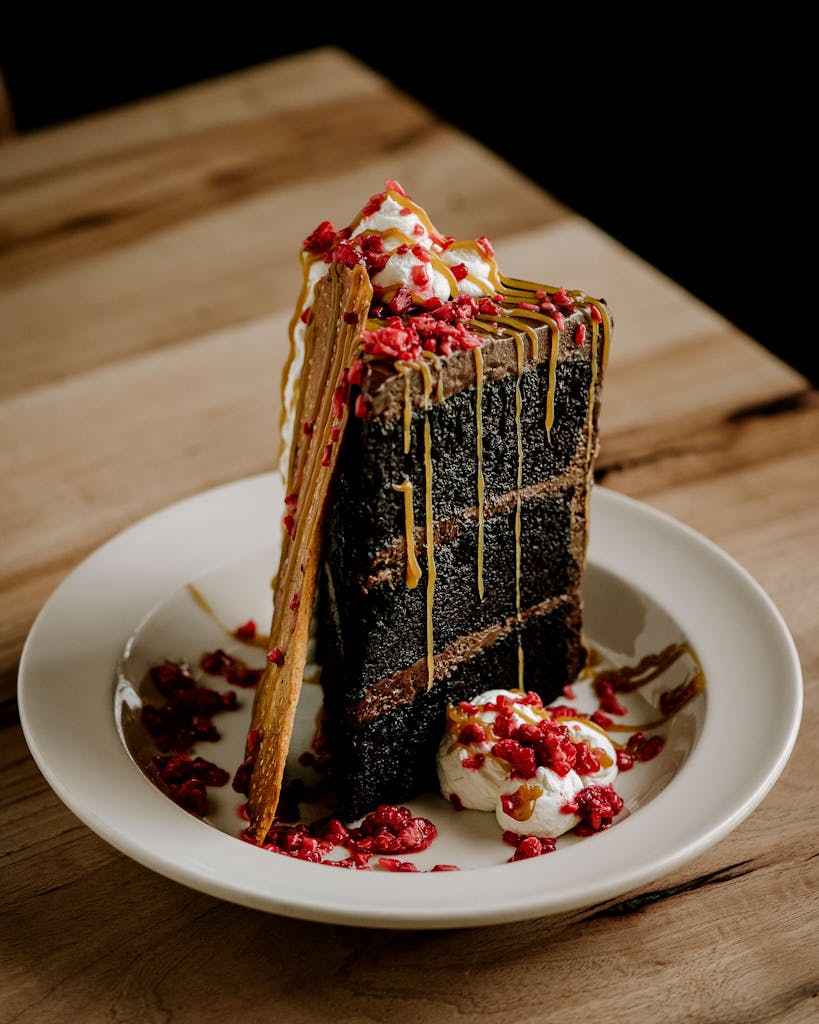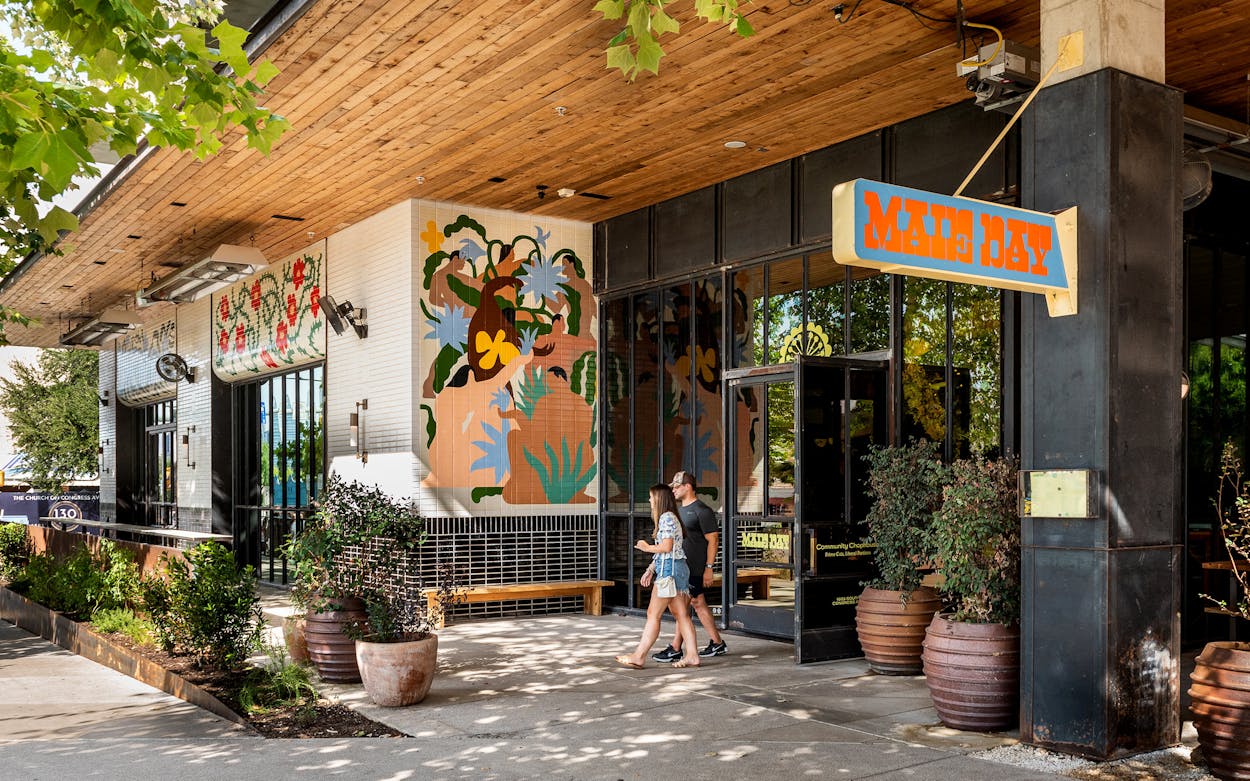A decade ago, Michael Fojtasek found himself on a succession of Greyhound buses traveling throughout the American South, a long and winding road that took the then 32-year-old chef through Athens, Charlotte, Nashville, and other key cities. He had become fascinated with Mississippi food writer John T. Edge’s book Southern Belly, a look at traditional foods, and was eager to eat at restaurants headed by a cadre of chefs—galvanized by Sean Brock, of Husk, in Charleston—who were breathing new life into the region’s beloved but sometimes stodgy dishes. That effort came to fruition four years later, when Fojtasek and his then–business partner, fellow chef Grae Nonas, opened a lovely Austin restaurant serving creatively updated Southern classics in a quiet neighborhood near downtown. The owners gave it a sweet, old-fashioned name, Olamaie (“Ola-may”), in honor of four generations of women in Fojtasek’s family. In a matter of months, it was amassing a rapturous local fan base. The next year it received a James Beard Award nomination for best new restaurant in the country.
On May Day of this year, Fojtasek opened a restaurant that in many ways is the opposite of Olamaie, a hearty chop and seafood house on one of Austin’s most touristy streets, South Congress Avenue. Maie Day is big and loud (he promises baffles will be installed soon), with tall ceilings and lots of glass and an exuberant mural in the bar that plays off Matisse’s famous painting The Dance. The basic idea is a casual but upscale steakhouse, but with surprises and a sense of fun. It has all the things you’d expect—red meat, raw oysters, mac and cheese—but Olamaie’s Southern sensibility is evident throughout, and there are a few cheeky riffs on dishes Fojtasek grew up eating in Dallas in the eighties and nineties.


Steak, of course, is the raison d’être, so over the course of several visits, I did my duty by trying two of the restaurant’s five post oak–grilled choices, starting with a $65 sixteen-ounce boneless ribeye from Dean & Peeler, an acclaimed producer in Floresville, about thirty miles southeast of San Antonio. The properly cooked meat wasn’t as decadent (or as expensive) as USDA Prime, but the robust flavor was fine for Top Choice. For tenderness, though, I preferred the also quite tasty $50 eight-ounce tenderloin from 44 Farms, headquartered halfway between College Station and Temple. Actually, even though a filet is a much leaner—and theoretically less flavorful—cut of meat, this particular one was the ribeye’s equal.
Other animal protein included a well-handled pork chop with a sweet pepper glaze and a lemon-honey-brined half chicken, which was unfortunately dry until I reached the juicy leg joint. My favorite meaty dish, though, wasn’t even listed as an entrée. It was an $18 appetizer called the Ham Plate, featuring thinly shaved portions from producers AB Vannoy, in North Carolina, and Benton’s and the Hamery, both located in Tennessee. The gossamer slices came with cornbread muffins and sorghum syrup–tinged butter. Each was dry-cured and aged, yet each had its own distinct expression of woodsmoke, salt, and time. “These are defining American country hams,” Fojtasek said—this nation’s equivalent of Italy’s prosciutto di Parma or Spain’s jamón ibérico.
For a restaurant that specializes in meat and seafood (don’t miss the sea bass accented with kale gremolata), Maie Day surprised me with eleven choices of salads and vegetables. Vegetarians will not be hungry or bored. A small cast-iron pan came brimming with coarsely grated fresh corn, the kernels lavished with butter and shallots and topped with popped sorghum, looking very much like mini-popcorn. Almost as enticing were the creamed greens, chopped kale and chard thatched in warm, melty Parmesan. (A word to the wise: the cheese reverts to a solid state the instant it cools, so don’t dawdle.) Glazed baby carrots—a covey of the root vegetables swathed in butter with a touch of bittersweet sorghum syrup—were fantastic. I much preferred them to the mac and cheese (fusilli and cheddar, to be precise), a huge, well-made serving that could have easily fed four lovers of very strong cheese.

I wanted to like the Funeral Potatoes (so named because they’re the kind of homey dish you’d take to a wake) because I loved the idea of an homage to Campbell’s cream of mushroom soup. But the devil was in the details—the house-made mushroom sauce was overpowered by a run-amok topping of crumbled potato chips and yet more strong cheddar cheese. The blast-from-the-past approach worked perfectly, though, in Maie Day’s Spinning Salad, a take on the signature presentation of the now quaintly old-fashioned chain Lawry’s the Prime Rib. There, a server carefully positions a bowl of salad atop a larger bowl of crushed ice, gives the salad bowl a spin, and drizzles on dressing. (When Fojtasek was a kid, he always wanted to celebrate his birthday at Lawry’s; today the Dallas location is one of three that remain open, the other two being in Beverly Hills and Las Vegas.) Although the assorted lettuces, julienned red and golden beets, cherry tomatoes, and hard-boiled egg remain stationary at Maie Day, they do go well with the tart vinaigrette that’s Fojtasek’s approximation of Lawry’s famous Vintage Dressing recipe. Someday, he says, he might ask his servers to try the routine: “That would be so much fun and super fifties.”
Not at all vintage were the two excellent crudos from the restaurant’s raw bar. The Gulf tuna was diced and served atop a puree of caramelized onion, lemon zest, and olive oil; the fluke was sliced and given a sweet treatment with juice from seasonal fruits (Texas peaches on my visit) balanced with tart pickled blueberries and a little lime zest. Says Fojtasek, “I like having something modern that we change around. It keeps the staff interested.” They can do a lot more of that, as far as I’m concerned.
Desserts at Maie Day are predictably big and brash, such as the mountainous slice of chocolate cake capped with caramel icing and coffee-tinged Chantilly cream; alongside were ripe raspberries and a benne seed crisp. The very sweet cookie selection, presented on a fancy tiered server, looked as if it had been designed for a children’s birthday party; the shortbread, chocolate-cherry, and sugar cookies tasted fine, but I longed for just one that was crisp and light. My favorite dessert was the satiny brûléed ricotta cheesecake. Like the chocolate cake, it came with a ton of extras (blueberry compote, sunflower seed–oat crumble, lime-mint granita), but I liked it best without them.
In the vast world of red-meat emporiums, Maie Day is a deliberate outlier and a breath of fresh air. It’s a steakhouse that doesn’t fit the stuffy special-occasion model. It feels like a place where you can walk in off the street for a drink and then decide to stay for a ribeye or a selection of snacky bites. In other words, it’s fun and it’s relaxed, and given the news these days, who couldn’t use more of both?
Maie Day
1603 S. Congress Ave, Austin
512-942-0823
D Tue–Sun.
$$$
Opened May 1, 2022
This article originally appeared in the October 2022 of Texas Monthly with the headline “South by South Congress.” Subscribe today.
- More About:
- Pat’s Pick
- Steak
- Restaurant Reviews
- Austin









